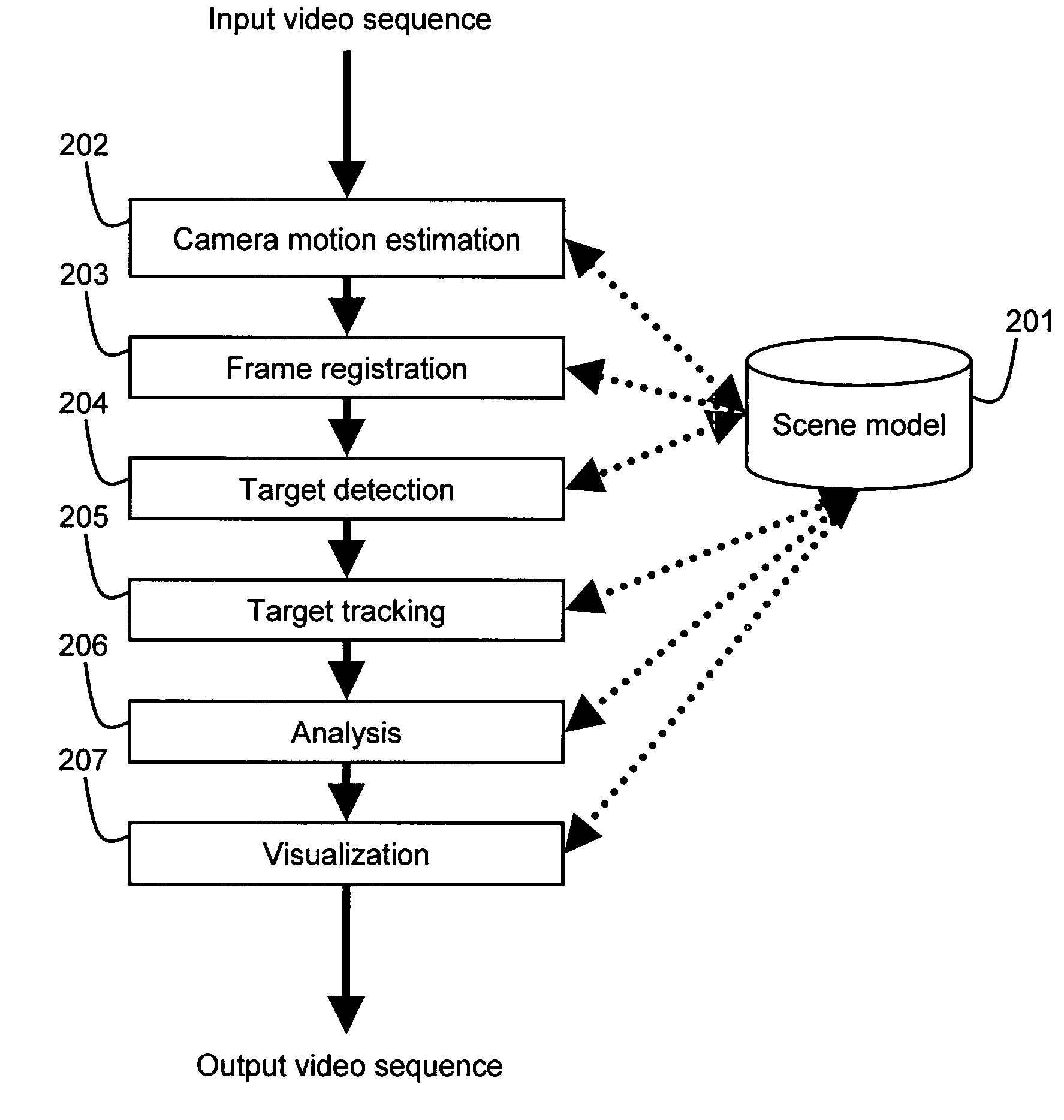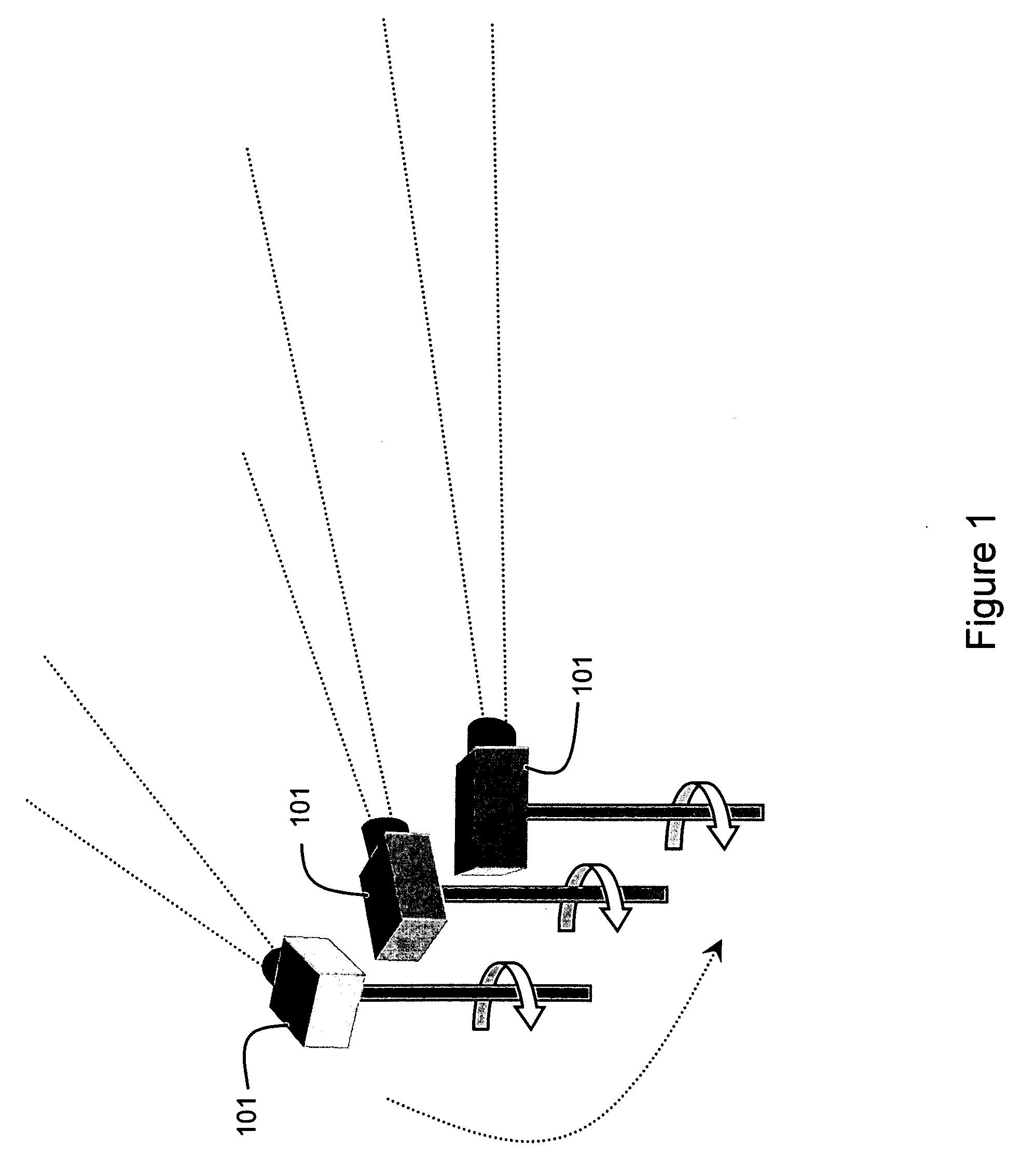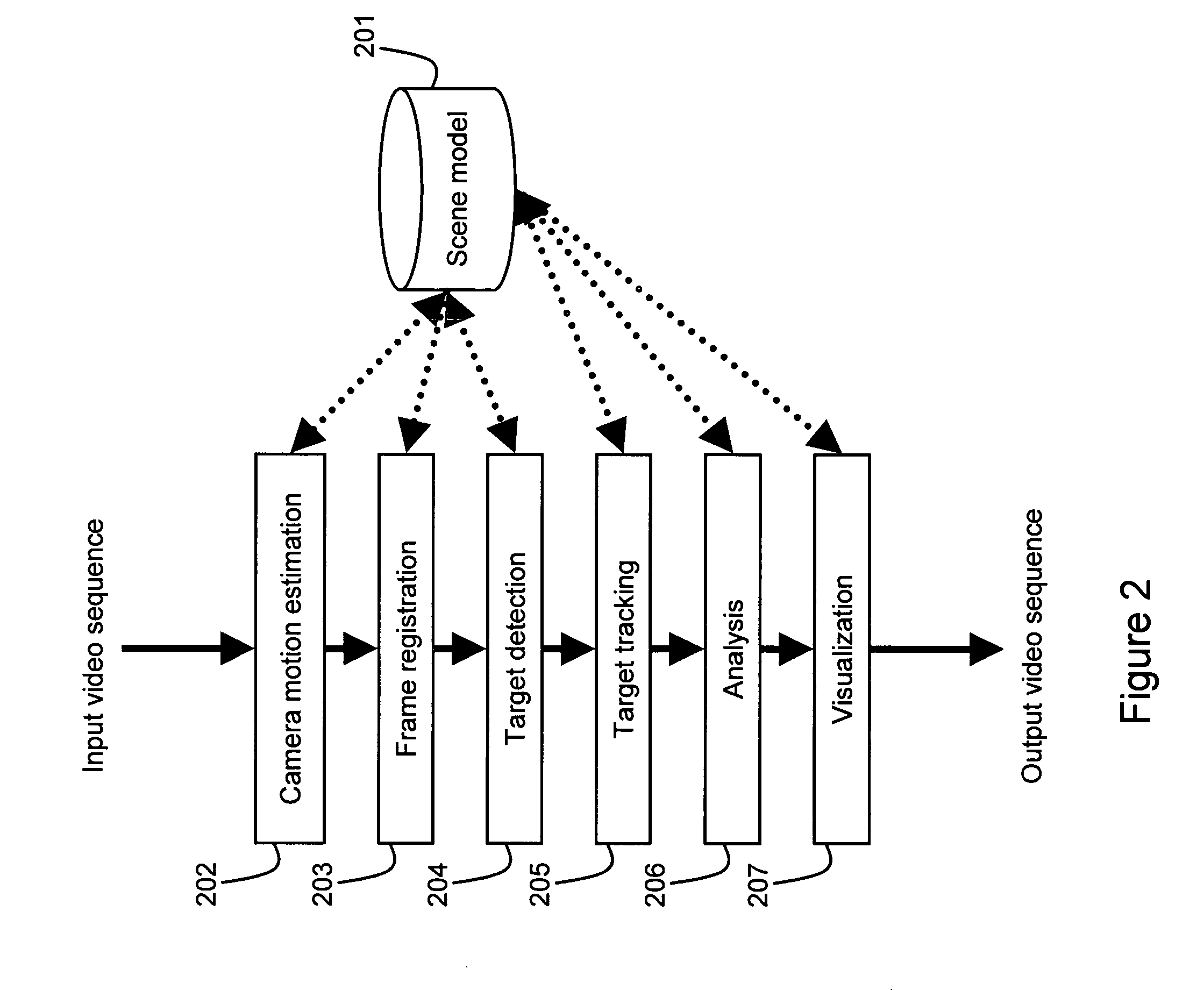Enhanced processing for scanning video
a scanning video and processing technology, applied in the field of enhanced processing for scanning video, can solve the problems of increased complexity and cost, poor video resolution and possibly inadequate detail when observing the scene, and trade-off between the effectiveness of each individual sensor and the number of sensors used
- Summary
- Abstract
- Description
- Claims
- Application Information
AI Technical Summary
Problems solved by technology
Method used
Image
Examples
Embodiment Construction
[0042]FIG. 1 depicts an exemplary usage of one or more pan-tilt-zoom (PTZ) cameras 101 in a security system. Each of PTZ cameras 101 has been programmed to continuously scan back and forth across a wide area, simply sweeping out the same path over and over. Many commercially available cameras of this nature come with built-in software for setting up these paths, often referred to as “scan paths” or “patterns”.Many third-party camera management software packages also exist to program these devices. Typical camera scan paths might include camera pan, tilt, and zoom. Typical camera scan paths may only take a few seconds to fully iterate, or may take several minutes to complete from start to end.
[0043] In many scanning camera security deployments, the programming of scan paths may be independent from the viewing or analysis of their video feeds. One example where this might occur is when a PTZ camera is programmed by a system integrator to have a certain scan path, and the feed from th...
PUM
 Login to View More
Login to View More Abstract
Description
Claims
Application Information
 Login to View More
Login to View More - R&D
- Intellectual Property
- Life Sciences
- Materials
- Tech Scout
- Unparalleled Data Quality
- Higher Quality Content
- 60% Fewer Hallucinations
Browse by: Latest US Patents, China's latest patents, Technical Efficacy Thesaurus, Application Domain, Technology Topic, Popular Technical Reports.
© 2025 PatSnap. All rights reserved.Legal|Privacy policy|Modern Slavery Act Transparency Statement|Sitemap|About US| Contact US: help@patsnap.com



